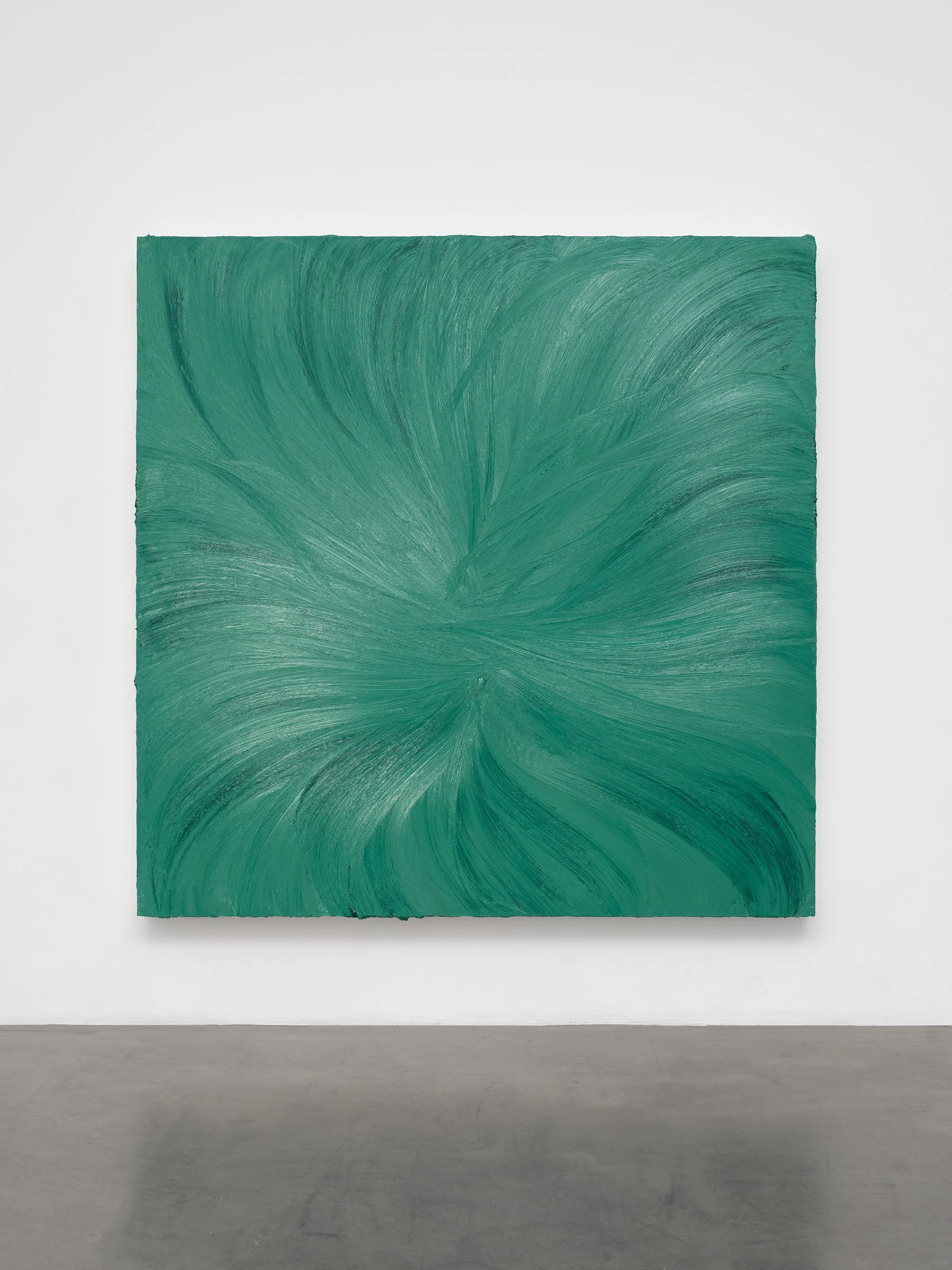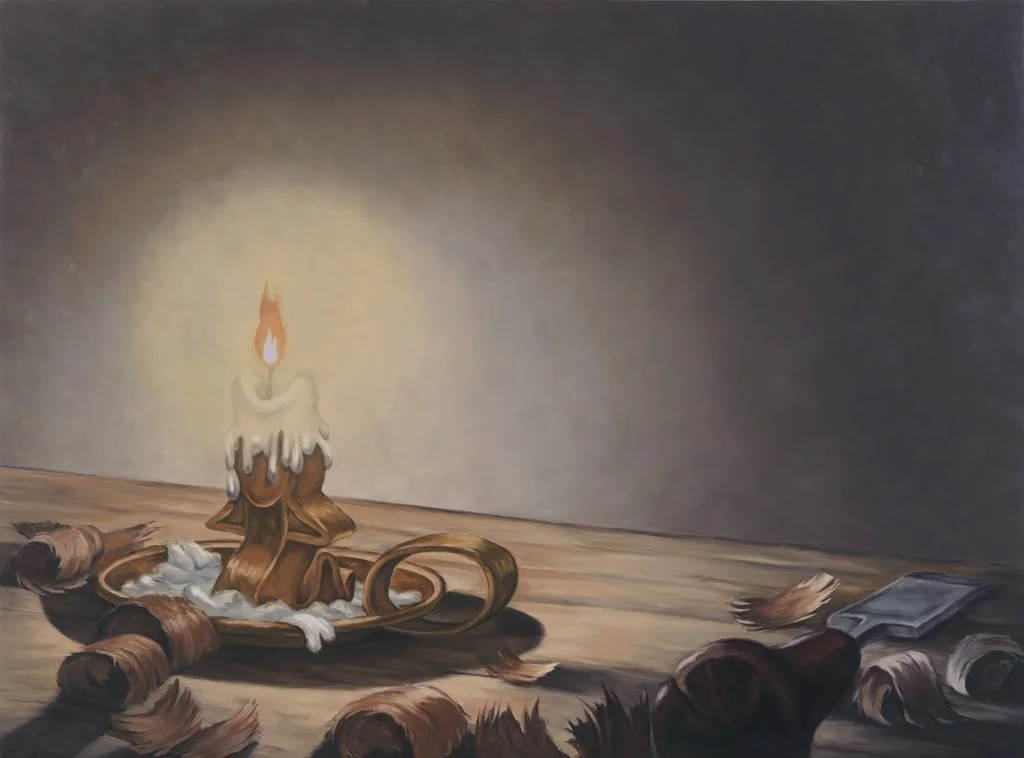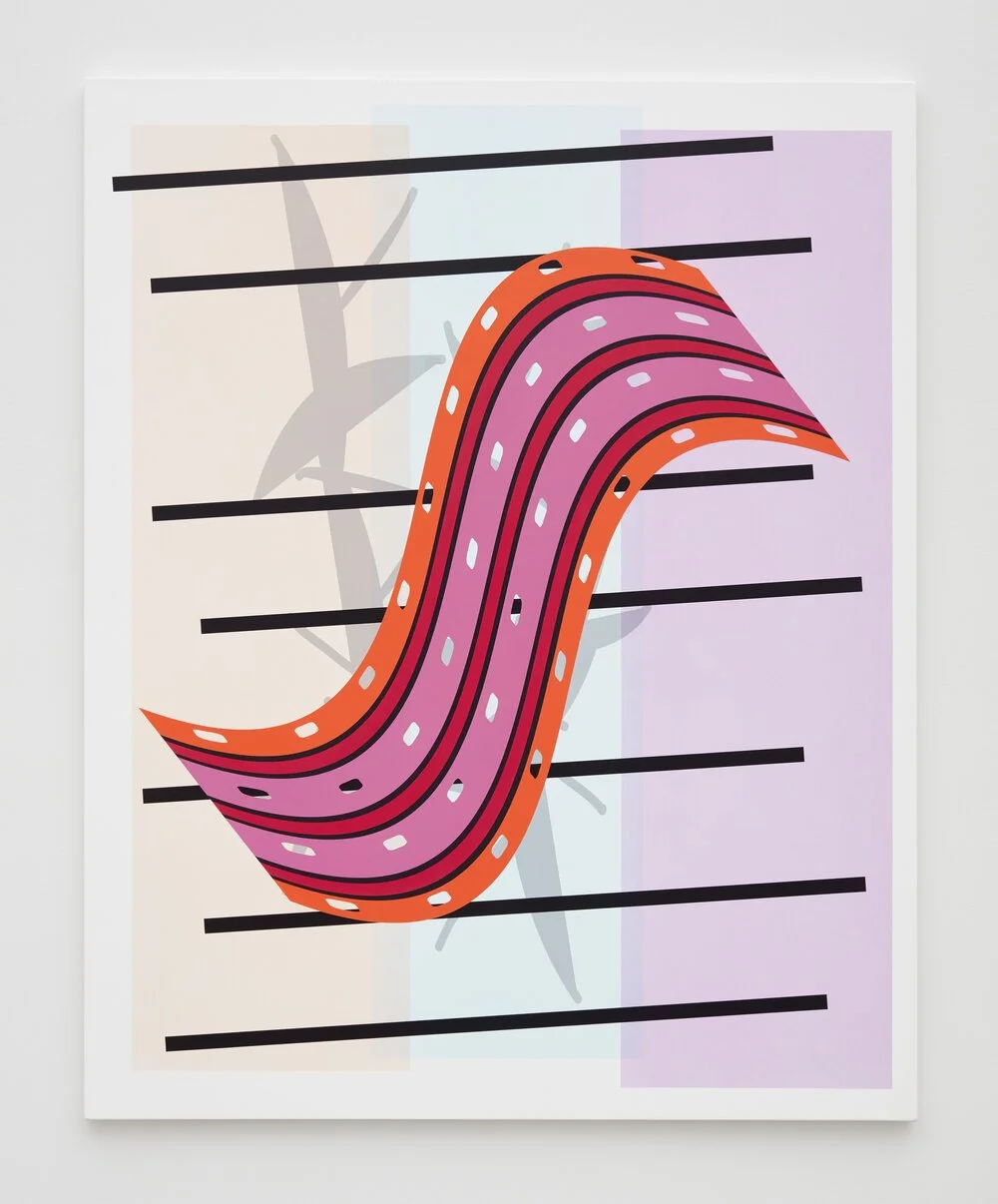Luiz Zerbini
“Dry River”
New York, 530 West 22nd Street
Nature, history, and the relationship between humans and the land foreground the visual identity of Luiz Zerbini’s artistic practice. Integrating both geometric and organic forms, his work draws upon the natural and urban imagery of his native Brazil. Lush, undulating vegetation and earthen textures meet mosaic-like facades and linear architectural constructions, bringing these ecologies into a shared landscape. The large-scale painting Dry River (2022), after which the exhibition is named, exemplifies his use of the grid composition as the structure of an imagined landscape of plants, trees, leaves, and textural fields. His multi-color palette is illuminated across a spectrum of verdant tonality, emphasizing the fundamental chromaticism of the natural environment alongside the neutral tones found in built systems.
Dry River, 2022 Acrylic on canvas Triptych: 118 1/8 x 236 1/4 inches (300 x 600 cm) overall
Dry River follows Zerbini’s recent major institutional exhibition, The Same Story is Never the Same, at Museu de Arte de São Paulo (MASP) in spring 2022. In it, Zerbini critically reinterprets several iconic scenes within the genre of Brazilian historical painting to represent the violent legacies of European colonization and its lasting oppression of Indigenous populations and the environment. Two works, the painting Rio das mortes (2021) and the table installation Jewels of the forest, were originally presented at MASP and are included in Dry River. As one of Zerbini’s “history” paintings, Rio das mortes interrogates the enduring system of ecological violence enacted by illegal gold mining operations upon the Indigenous Yanomami people of North Brazil. The pollution of the region’s major river systems is shown in the kaleidoscopic streams of color, winding their way down their canvas, and turning a muddled, sickly tint. A work tent erected over the river references the exploitation of poor laborers working on the frontlines, and the corrupting intrusion of illegal mining on the land. Jewels of the forest brings forth material traces of the forest into the gallery space, displaying an array of seeds, shells, rocks, and leaves as reclaimed treasures held in jewelry cases. The table below is painted with the design of a gold patterned skeleton, symbolizing the death toll from illegal mining and its cataclysmic effect on Indigenous communities and their land.
Alongside these canvas paintings will be shown a series of new monotypes, also entitled Dry River. These vibrant, hortulan prints are created through a non-reproducible process; leaves, flowers, and branches are laid on a painted metal plate, then pressed onto a sheet of Kozo paper. Leafy veins, spindly roots, and curling petals take form against patterned backgrounds. This resulting impression captures the intricate morphology of these floral elements, physically translating the botanical realm into a two-dimensional space. Each monotype can be seen as a constituent vision into the ever-shifting ecosystem of the “dry river,” a graphic construction of vegetal systems transformed with paper and paint.
Last, but not least, the exhibition will feature the short film Xamãpacurá, produced during some of the most severe months of the COVID-19 pandemic. The 20-minute-long video is set within the exhibition 2020 Campo Expandido at Centro Cultural Oi Futuro. The artist, dressed as a beekeeper and donning a custom head garment made in collaboration with stylist Isabela Capeto, traverses through the neon and ultraviolet-lit foliage that fills the gallery space. Drawing to mind the image of a cosmonaut entering a new—or old—world, Zerbini describes the human presence as if he was “from the future, arriving and taking care of the forest.”







